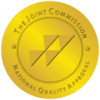What Happens During Heroin Withdrawal


Written By
DreamLife RecoveryHeroin addiction is a serious problem in the U.S. and throughout the rest of the world. In fact, approximately 9.2 million people worldwide use heroin.
Heroin and other opiates are also responsible for 18 percent of rehab admissions in the U.S.
Are you currently dealing with heroin addiction? Have you been thinking about giving it up and getting clean?
If you want to quit heroin but haven’t taken action yet, you might find yourself worrying about what the withdrawal process will be like. If this is the case for you, keep reading.
Below, we’ll explain everything you need to know about the heroin withdrawal process and information on the correct way to give up heroin.
What are Heroin Withdrawal Like?
Everyone’s experience with heroin withdrawal is a bit different.
As a general rule, though, the withdrawal symptoms one experiences when they begin to detox will be opposite of the effects they experience when they use heroin.
Heroin use causes an intense rush of pleasure, reduced heart rate, and sedation. Heroin withdrawal symptoms are the opposite of these for most people.
The following are some of the most common heroin withdrawal symptoms you might experience when your body begins to detox:
- Severe drug cravings
- Nausea and vomiting
- Diarrhea
- Abdominal pain
- Sweating
- Shaking or shivering
- Anxiety and agitation
- Depression
- Muscle spasms
- Muscle and bone aches
- Runny nose
- Restlessness and difficulty concentrating
- High blood pressure
There are a lot of factors that influence the severity of the withdrawal symptoms a person will experience when they stop using heroin. For example, those who used it for long periods will experience more severe symptoms, as will those who used it in large quantities.
Some people may experience more intense withdrawal symptoms if they have a history of mental illness or if they’ve gone through opioid abuse and withdrawal in the past.
Heroin Withdrawal Timeline
Heroin withdrawal usually happens in three stages. During each of these three stages, your symptoms will vary.
1. Early Stage
Most people start to experience withdrawal symptoms shortly after they last used heroin. Often, symptoms present themselves within 12-24 hours of the person’s last use.
The first symptoms you’ll experience usually include muscle aches, irritability, and profuse sweating.
2. Peak Stage
After the first 12-24 hours, heroin withdrawal symptoms tend to get a lot worse. For 2-3 days after the last use, you’ll begin to experience severe sleep difficulties and insomnia.
You may also experience digestive distress and symptoms at this time. This includes symptoms like abdominal cramping, diarrhea, and vomiting.
3. Late Stage
The late stage of heroin withdrawal tends to last between four and seven days.
During the late stage of heroin withdrawal, your early symptoms will start to subside. You might still experience symptoms from the peak stage (cramping, vomiting, etc.), but they will start to subside, too.
Sleep difficulties tend to linger during this stage, too. Most people find that they have a hard time getting a full night’s rest until they make it through the late stage.
The Right Way to Quit Heroin
If you want to quit heroin and get clean for good, there’s a right way to go about giving up the drug.
Many people assume that they can quit using heroin cold turkey. That’s definitely not the case, though.
Giving up heroin cold turkey is very dangerous. It comes with severe withdrawal symptoms, and it can increase your risk of overdose significantly should you start using the drug again.
Instead of quitting cold turkey, it’s best to work with a professional at a drug rehab facility.
If you get help from a rehab facility, you’ll have access to medications that can help to minimize your withdrawal symptoms. You’ll also have access to round-the-clock medical care should anything go wrong during the detox process.
Rehab facilities also provide you with other resources to help you get clean and stay clean. This includes things like support groups, family and one-on-one therapy, and alternative treatments that complement more traditional approaches.
Tips for Choosing the Right Rehab Facility
Working with professionals at a rehab facility is definitely the way to go if you want to give up heroin for good. Remember, though, that not all rehab facilities are equal.
To get the greatest amount of support as you begin the heroin detox and recovery process, you need to choose the right facility to help you. Here are some tips that will help you make the best decision for yourself and your needs.
What Is Detox Really Like?
Find Out More1. Consider Their Specialities
Look for a facility that offers treatment for individuals dealing with heroin addiction. This will help you ensure you have access to the resources you need.
2. Ask Which Therapies They Offer
Find out what types of therapies they offer at the facility you’re considering.
For example, DreamLife Recovery offers group therapy, one-on-one counseling, equine therapy, yoga therapy, and much more. Not all facilities offer the same experiences.
3. Think About the Cost
Of course, you’ll need to consider the cost of treatment, too. Check to see if the facility accepts your health insurance before you agree to participate in a specific program.
4. Find Out About Professional Affiliations
It helps to find out if the facility is associated with any professional groups, too. This might include groups like the National Association of Addiction Treatment Providers, which officially recognizes DreamLife Recovery.
Professional affiliations like this are a sign that the facility commits itself to continue education and learning about the latest treatment modalities.
Quit Heroin Today
There’s no denying it. If you choose the quit heroin, you’re going to experience withdrawal symptoms.
If you follow the proper procedure for giving up heroin, though, your withdrawal symptoms will be less severe, and you’ll be less likely to relapse later on.
Keep this information in mind to make the withdrawal process and manageable as possible. Be sure to contact a reputable drug rehab facility, too, for additional help navigating this process.
If you’re located in or around the Donegal, Pennsylvania area, we’re here for you at Dream Life Recovery. Contact us today to learn more about our services or to begin the admissions process.
Resources:
- “The Truth About Heroin: International Statistics” – drugfreeworld.org
- “The Feeling of Getting High on Heroin” – Hartney, Elizabeth, BSc, MSc, MA, Ph.D.; Rev. by Steven Gans; VeryWellMind; 20 March, 2020
- Weiss, Linda et al. “Understanding prolonged cessation from heroin use: findings from a community-based sample.” Journal of psychoactive drugs vol. 46,2 (2014): 123-32. doi:10.1080/02791072.2014.890765
- “What are the treatments for heroin use disorder?.” National Institute on Drug Abuse, 2 Jun. 2020, https://www.drugabuse.gov/publications/research-reports/heroin/what-are-treatments-heroin-use-disorder Accessed 29 Mar. 2021






